Check Access for Specific Microsoft 365 User
User Access in Microsoft 365 Environment
When using Microsoft 365 for your daily collaboration, there are numerous occasions where you will grant or remove access to specific items in your environment. Microsoft 365 gives multiple ways of doing that, be it via direct access to the file or maybe through security groups, SharePoint groups, and sharing links, among others. After a while, you may lose traction of which user has access to a specific item and how you gave the access. This is where the Syskit Point User Access report comes in to save the day.
Syskit Point User Access Report
Capabilities
Syskit Point User Access report is a powerful tool that allows you to check all access for every specific user in your Microsoft 365 environment. It enables you to:
- See what type of access does a user have (Full Control, Edit, Contribute, or any other level of access you may have granted in your environment).
- Understand through which channel is the access given to the user (Being a member in a SharePoint group, Group owner, Administrator, through a security group or directly to said user).
- Show the details from which exact source were those rights given to it.
- Perform multiple actions directly on the report (Remove Access, Change Owners, Change to Member, Edit Permissions, Remove from Group, Remove Sharing Link).
Use Cases
There are multiple occasions where using the User Access report will help you successfully manage your Microsoft 365 environment.
Some of them are:
- When a new user in your Microsoft 365 environment is being onboarded, quickly check if they have all the correct permissions to succeed in their work.
- When a user is being offboarded to double-check if they still have access to some information they shouldn't have (via Anonymous sharing links).
- To check if some external collaborators have access to something they shouldn’t have.
- When reorganizing your environment (removing users from certain security groups or changing permissions for specific users in your environment).
How to
Generate User Access Report
Start by signinig in to your Syskit Point. From the home screen that opens, click the Report button (1) located in the left-side bar.
When located on the home screen, clic k the Reports tile.
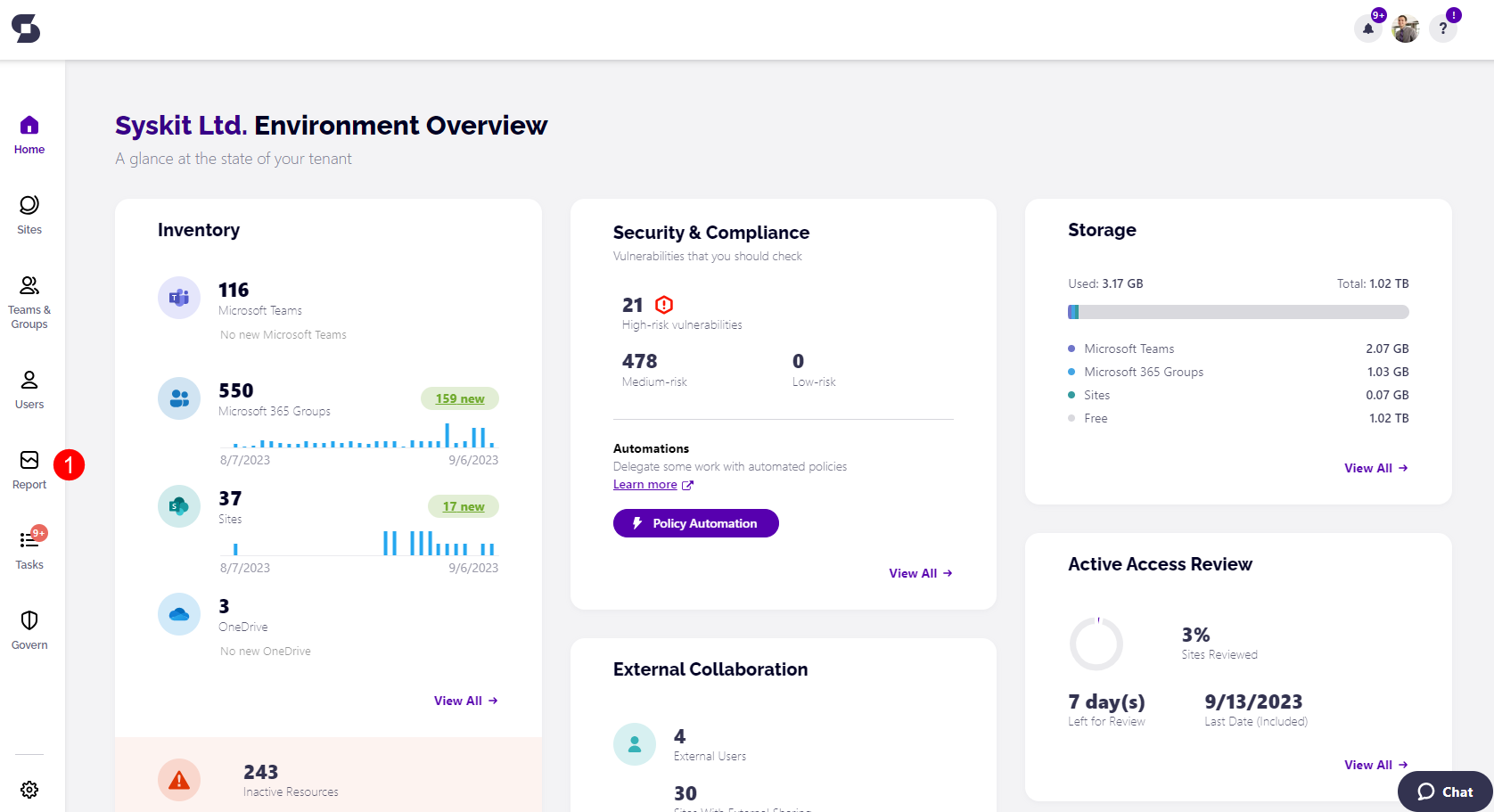
It will redirect you to the Syskit Point Report Center, where you can click the User Access report tile.

Hint! - you can also access the User Access report through various other Syskit Point reports, User overview screen, and User details screens.
Now that you are located on the User Access selection screen:
- Choose one or multiple users (1) you wish to generate the report for
- Select the type of workspaces (2) to show on the generated report
- You can choose among Sites, Microsoft Teams, Microsoft 365 Groups, One Drive and Power BI
- Click the Run Report button (3) to generate the report
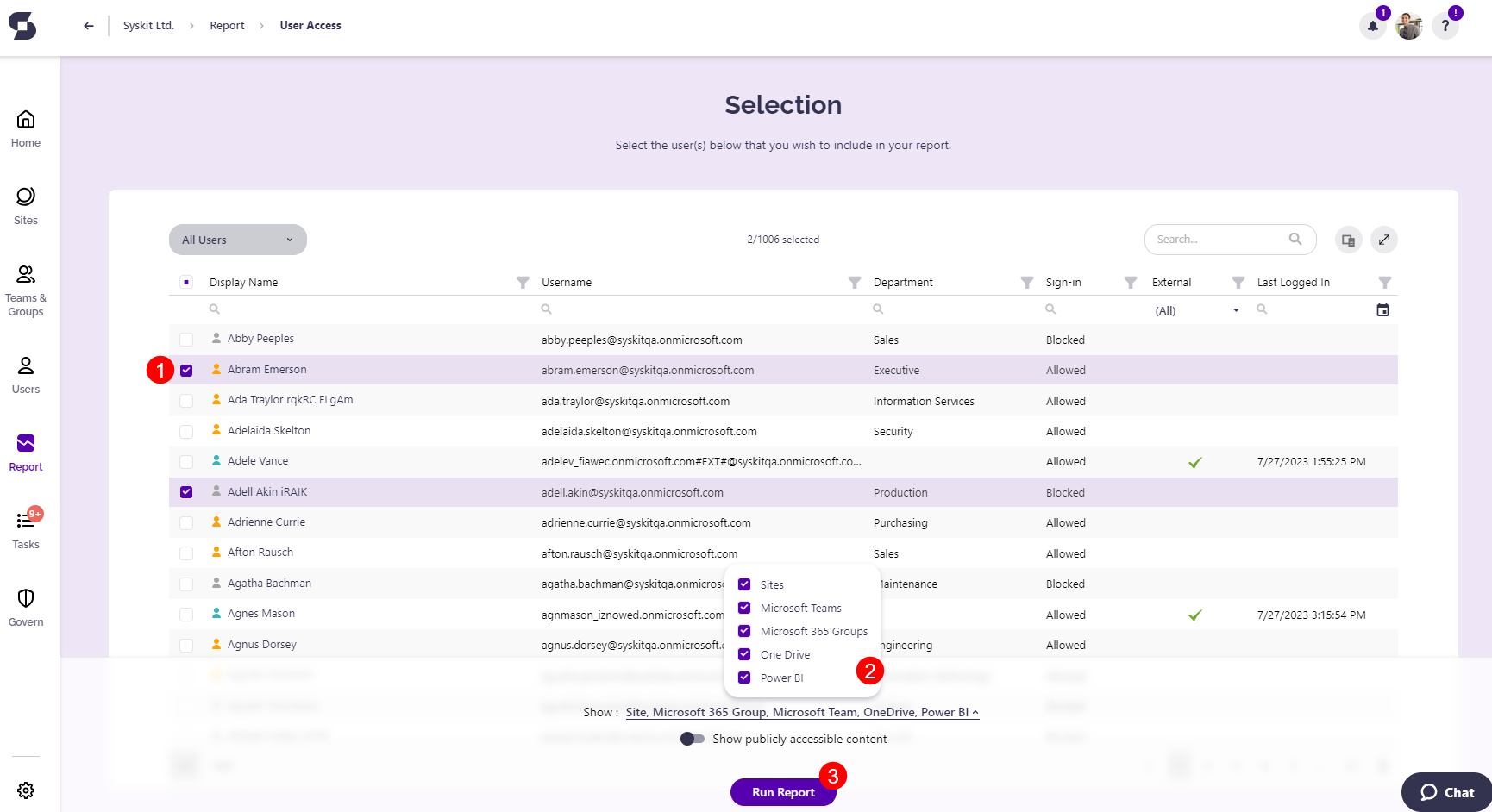
Available Options and Actions
Now that you have successfully generated the User Access report, you'll see the following information:
- User (1) for which you have generated the report.
- All types of workspaces (2) (Sites, Microsoft Teams, Microsoft 365 Groups, Power BI, and OneDrive accounts) that user has some kind of access to.
- What kind of access (3) does the user have on a said workspace.
- How the access was given (4) to said user - directly or through a group, for example
- Details (5) containing exact workspaces through which the user got their permissions; Microsoft 365 Groups and Microsoft Teams shown here are drillable (6), opening their respective detail screens.
- You can schedule and export the report as PDF or Excel (7).
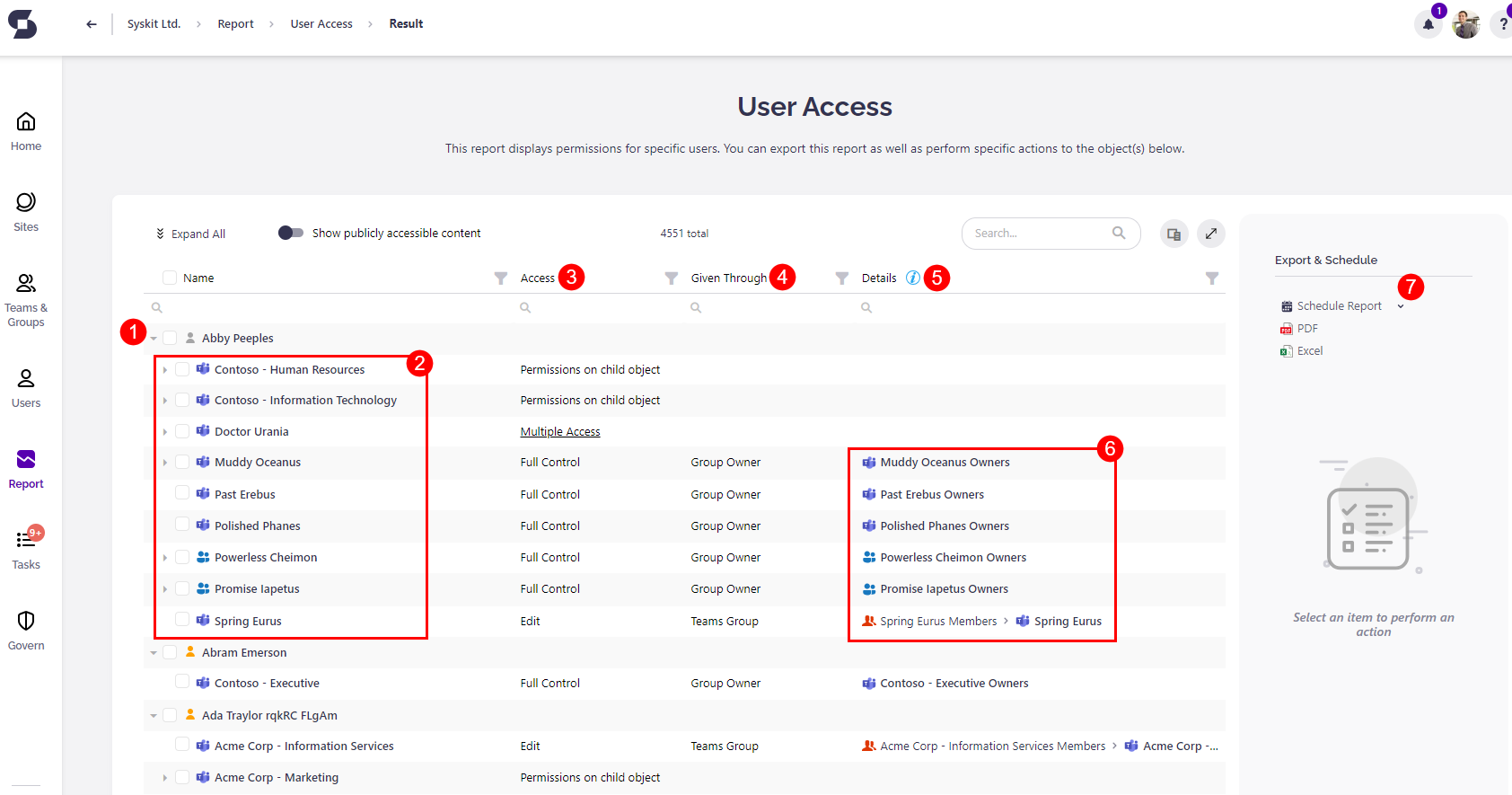
Remove Access
There are several ways to remove access for a user through the report:
- To remove all access the User has, select the user's name (1).
- On the right side of the screen, the option to Remove Access (2) will show.
- After clicking the Remove Access action, a pop-up will appear, providing more details on what the action will entail and prompting you to confirm by typing REMOVE in the space available.
- Clicking the Remove(3) button will finalize the action.
- This can also be completed for a single workspace by clicking the option to expand, located next to the user's name, and selecting the specific workspace.
- On the right side of the screen, the option to Remove Access (2) will show.
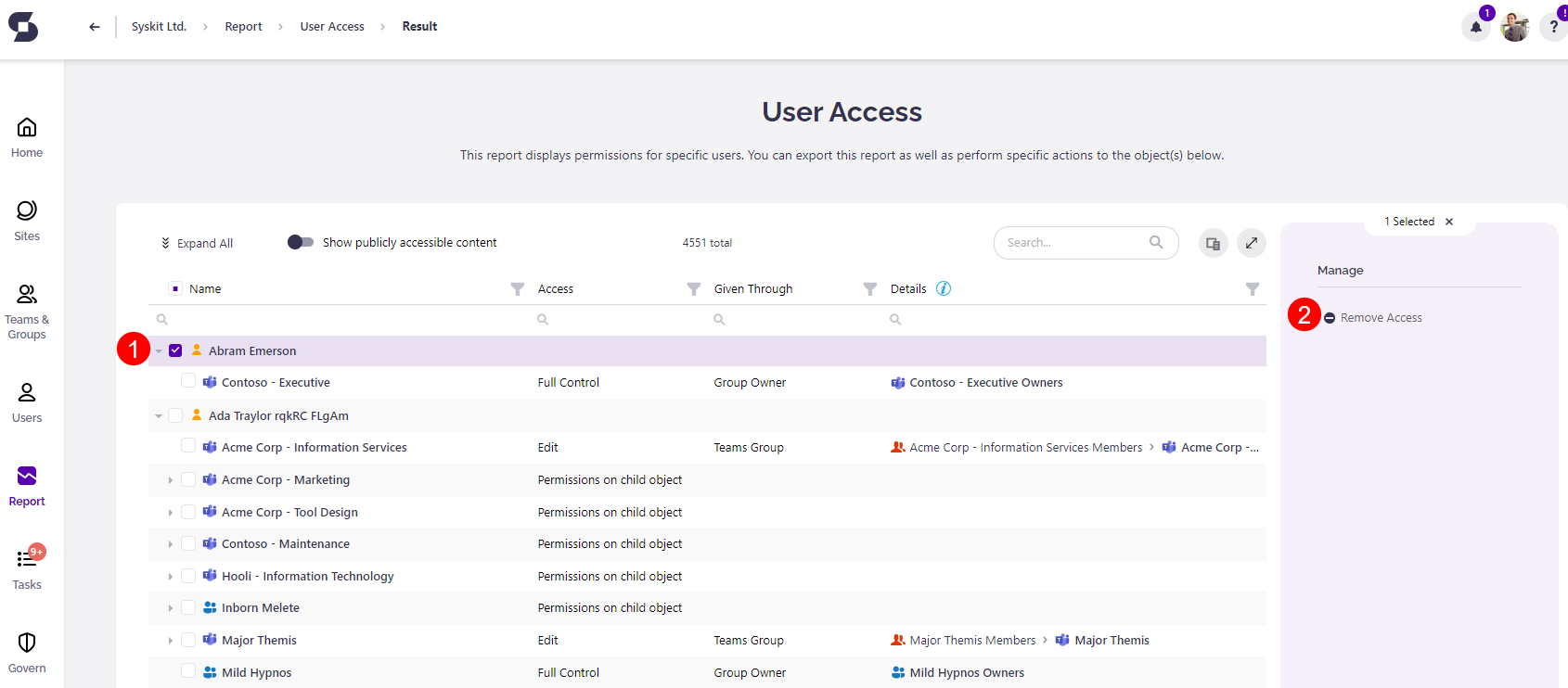
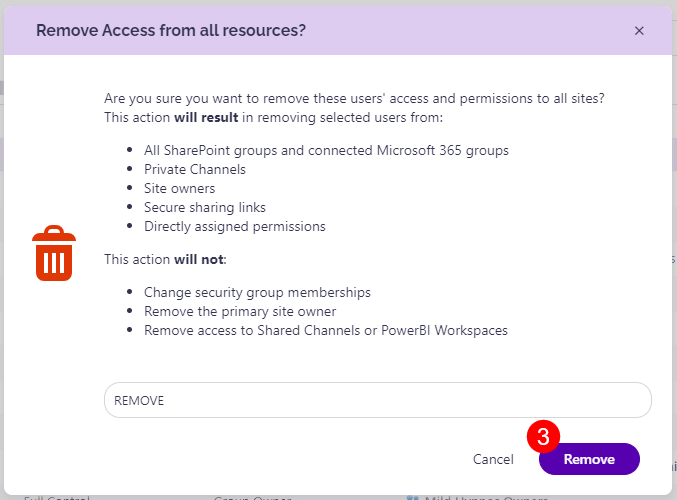
After completing the action, you will receive a notification containing the see the result link, which reloads the report data when clicked. Once the action is completed, the user will no longer have access to any workspace.
Please note!
Any user that had their access removed will successfully be removed from any private channels they had access to; however, at this time, it is not possible to remove access from shared channels and Power BI workspaces.
You can also remove access for a specific user by clicking the user's name from the report. This will redirect you to the user details screen.
- Scroll down to the Access tile (1), and you'll have the option to either select all workspaces (2) or select them individually to perform the Remove Access (3) action.
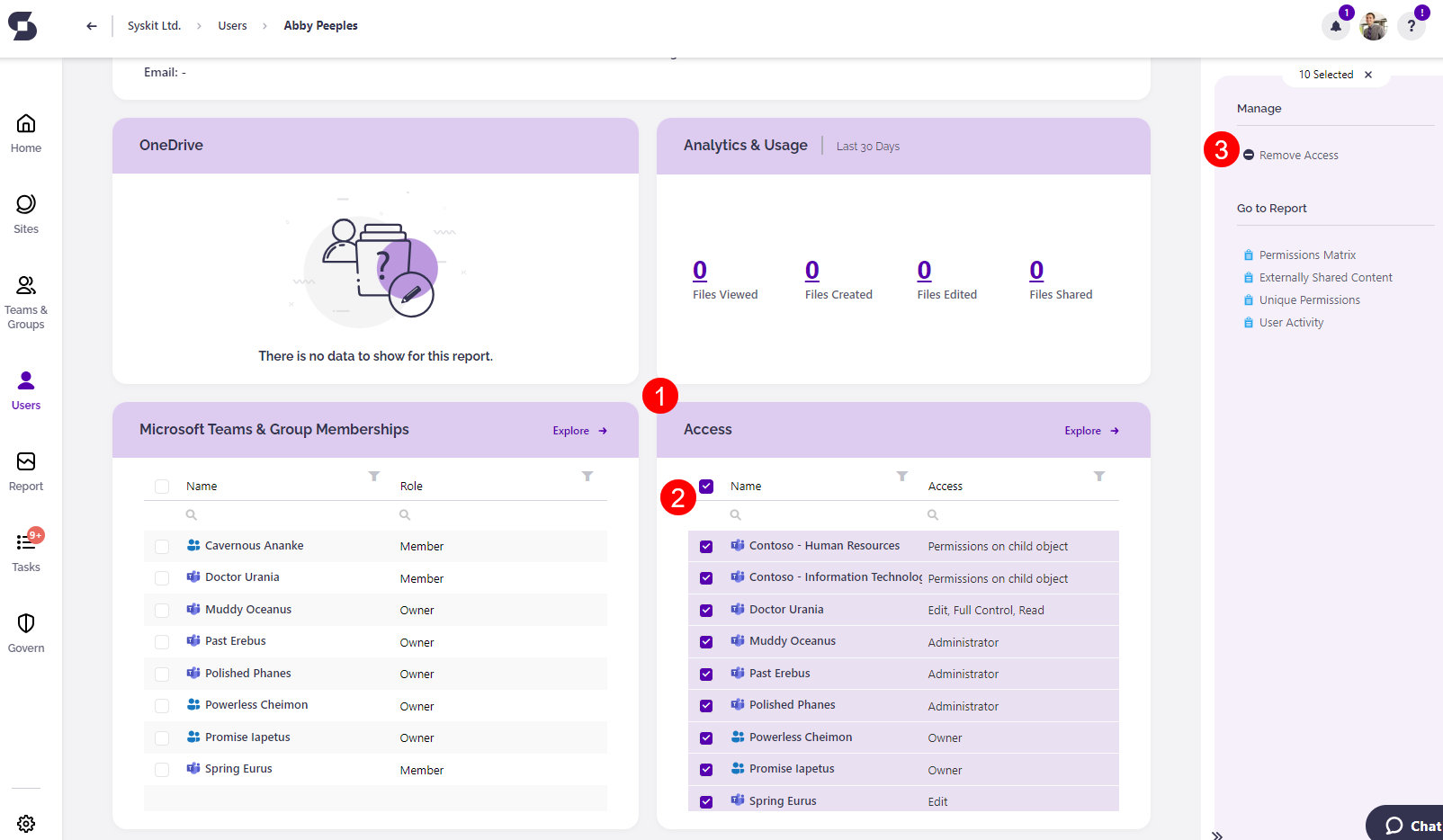
User Access report helps all Admins and content Owners to keep their Microsoft 365 environment clean, secure, and easy to manage all at one place.